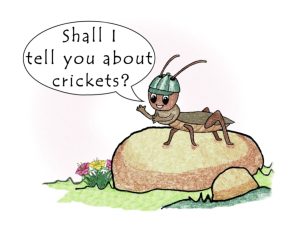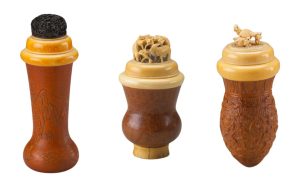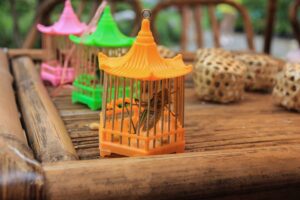Cricket fighting has been a popular pastime in China.

DID YOU KNOW….
Cricket fighting has been a popular pastime in China for over a thousand years?
Although its popularity has waned somewhat in recent years, the breeding and selling of fighting crickets remains a lucrative industry. There’s even an annual National Cricket Fighting Championship that follows tbe rules established in the 13th century, which attracts fans from all over China. And don’t worry, crickets rarely harm each other when fighting; matches are decided when one cricket stops fighting and attempts to flee. It’s not uncommon for crickets with impressive pedigree and talent to be worth as much as 10,000 yuan, or $1,600!
In ancient China, pet crickets spent their winters in opulent gourds.

THE IMPERIAL CONCUBINES OF CHINA’s Tang Dynasty (618-907) had a rather lively autumn tradition. According to ancient texts, as the weather cooled, they collected crickets and slipped them into tiny golden cages. “These… they place near their pillows, and during the night hearken to the voice of the insects,” is how it is described in the eighth-century book Kaiyuan Tianbao Yi Shi. “This custom was imitated by all people.”
Whether or not the ladies at court were cricket- catching influencers is the stuff of legend, people did begin domesticating crickets during the Tang Dynasty to keep their songs close. The insect’s trill has long been beloved as an art; some Chinese people still keep crickets to this day.
Notably, the practice led to new forms of craft from the Tang Dynasty onwards: Artisans began designing containers that ensured the good health of their insect residents year-round. Before the introduction of modern materials such as plastics, many crickets divided their time between a summer home and a winter home, as did
affluent retirees. Simple clay jars kept them cool in warmer months, but to beat the bitter cold, they needed a cozier shelter. And that’s where the gourds come in.
The ornate cricket gourds were more than functional, they developed into a striking art form. Their fruits were grown in special clay or wooden molds, some of which were so ornate that they created intricate reliefs, from geometric patterns to landscapes, on the gourds’ flesh. Gourds were also painstakingly incised with a heated metal needle.
The gourds are part of the Minneapolis Institute of Art’s larger collection of related exhibits that depict the Chinese practice of cricket-keeping. There are delicate accessories including tiny bamboo or wooden cages, metal catching nets, and even painted porcelain feeding dishes that were used to serve meals of cucumber, lettuce, chestnuts, and beans.

Attracting crickets to your garden can be beneficial as they contribute to the ecosystem by acting as a natural pest control and enhancing soil health. Here are some tips to attract crickets to your garden:









